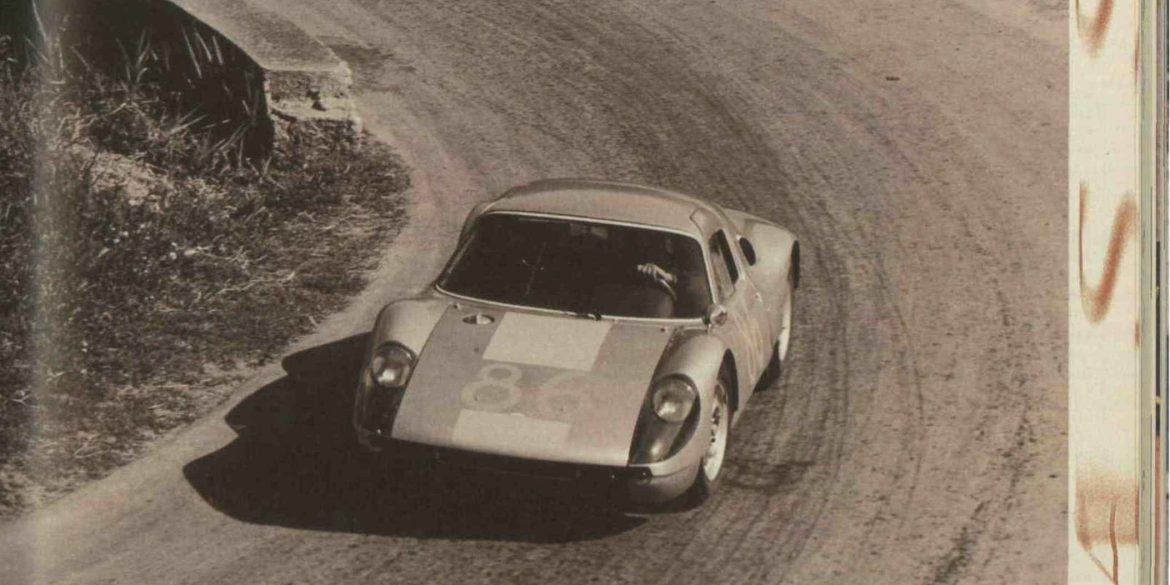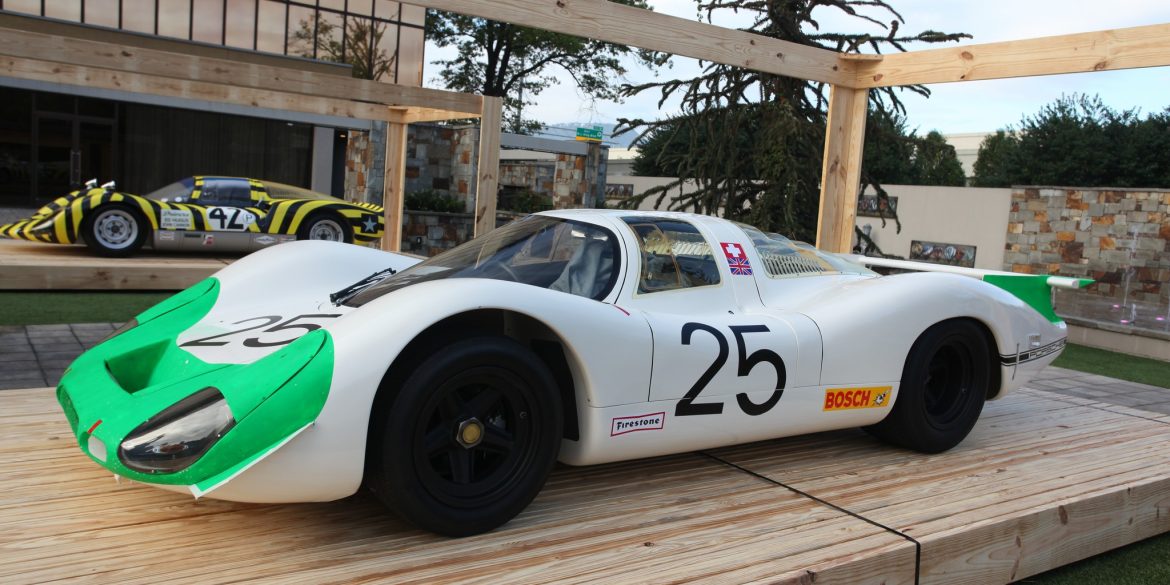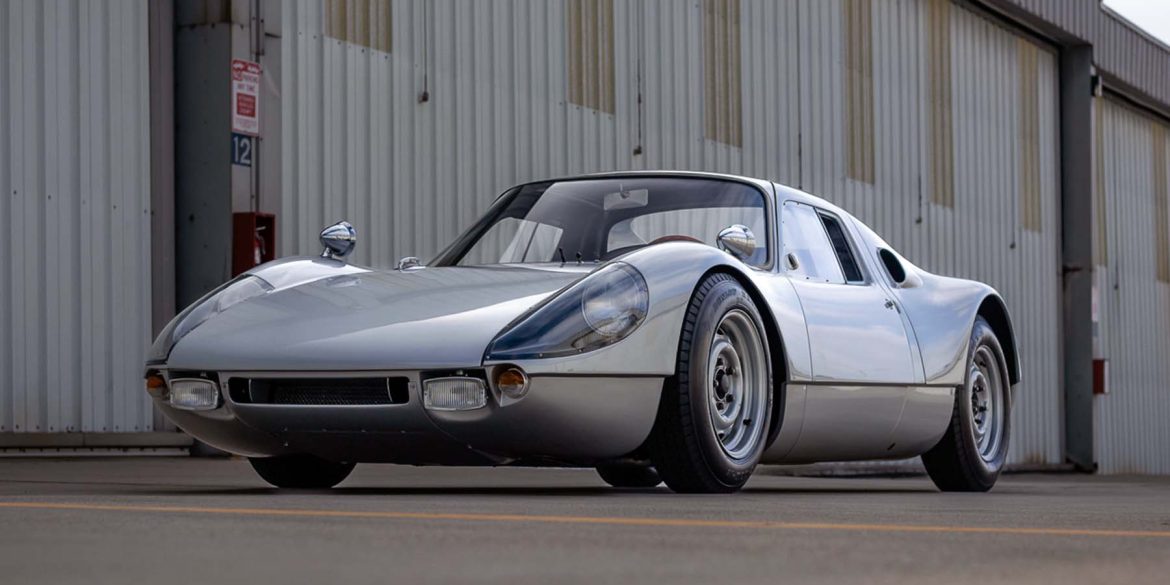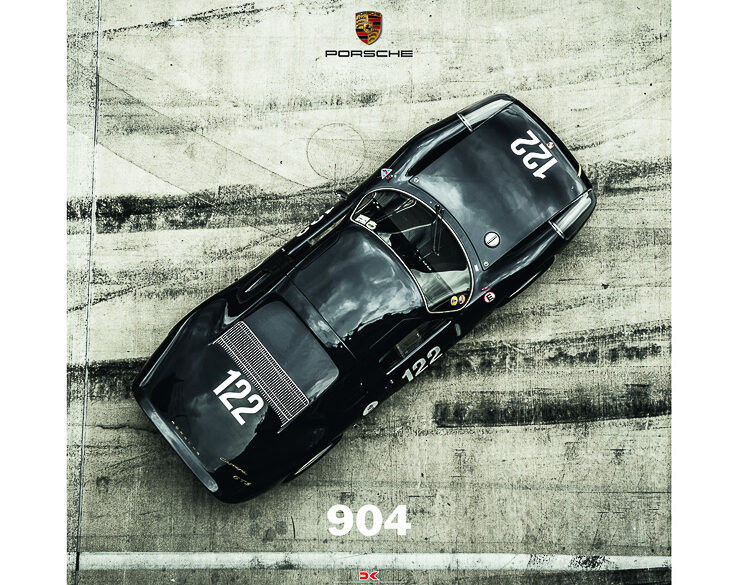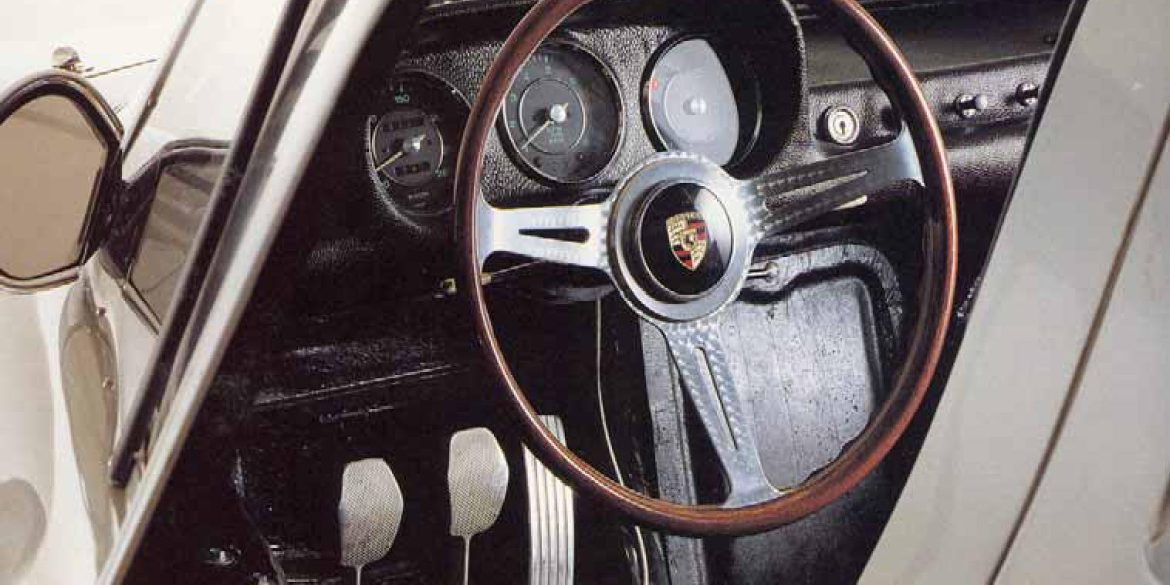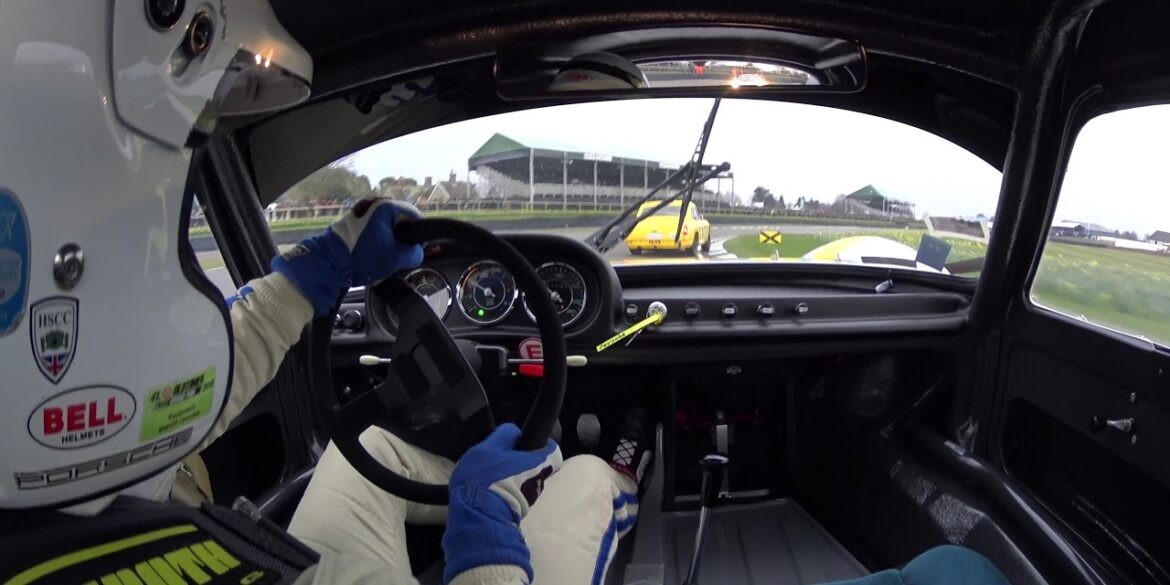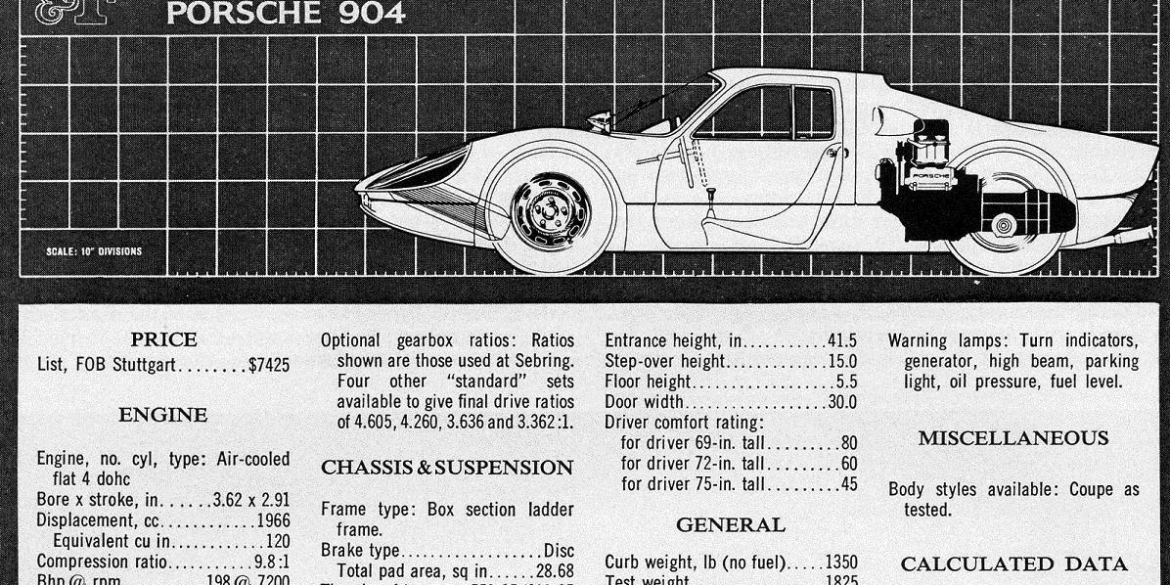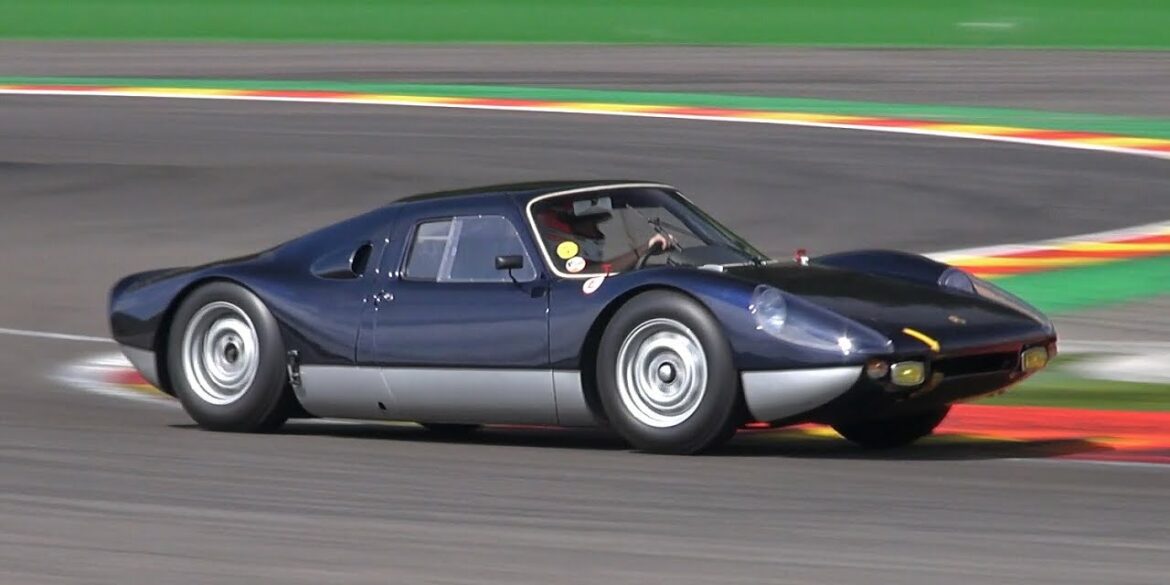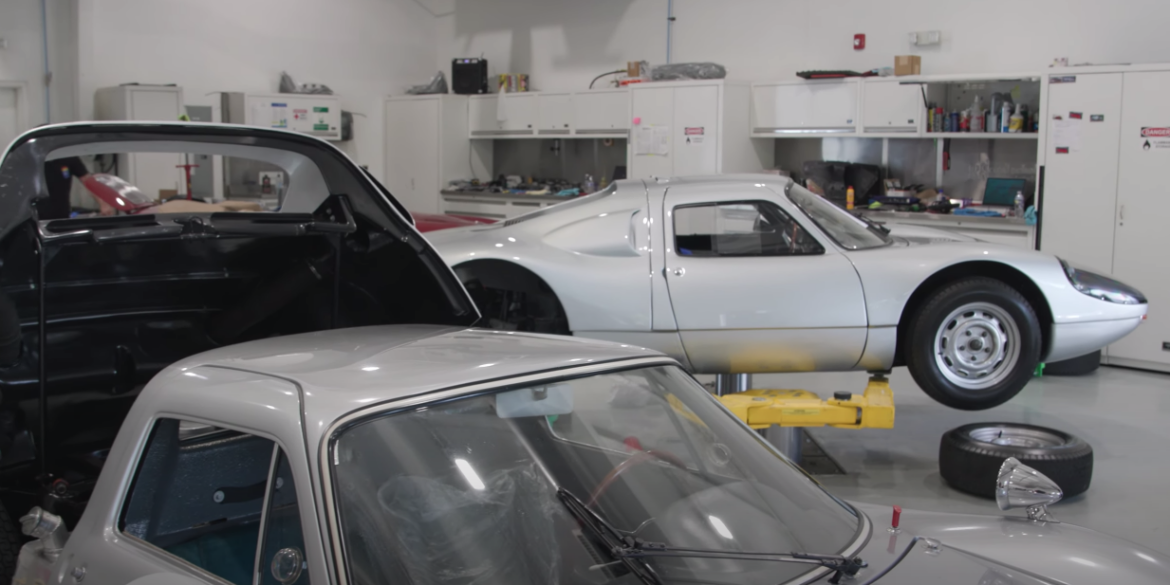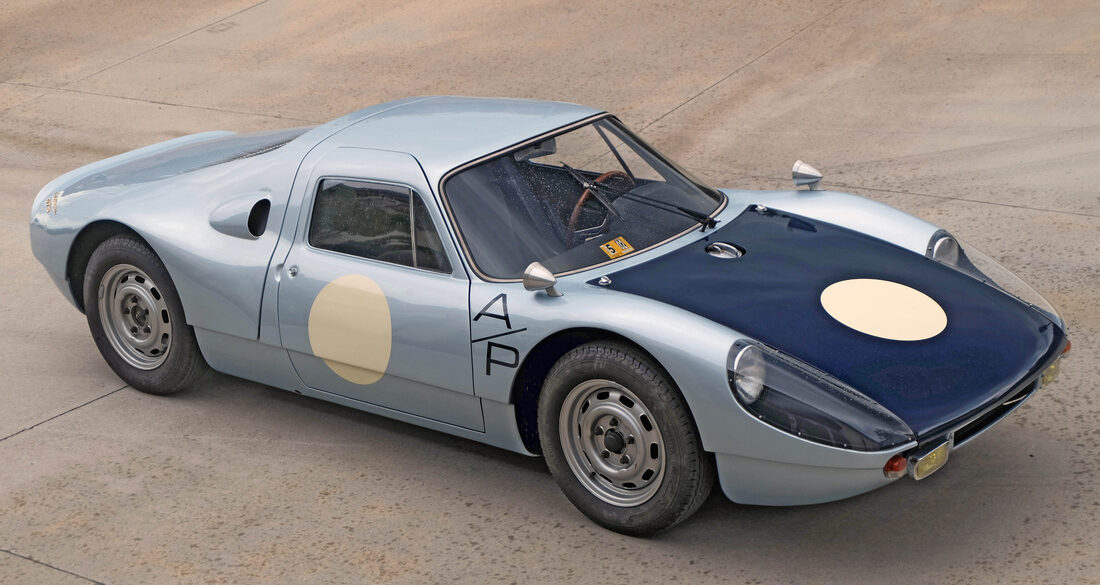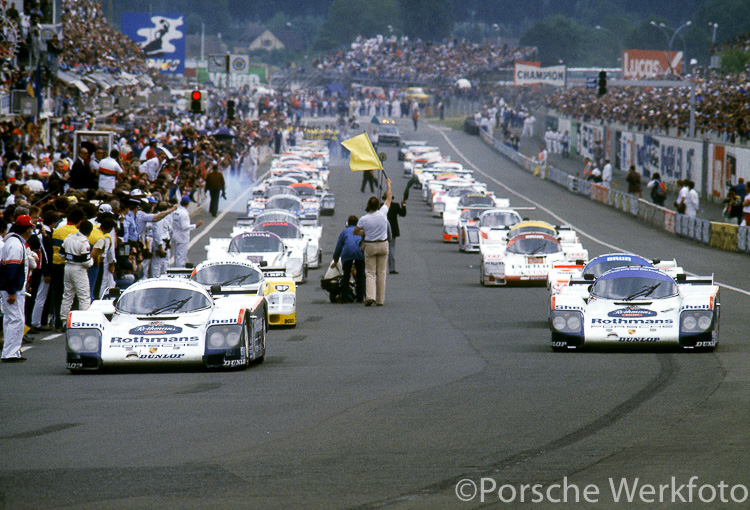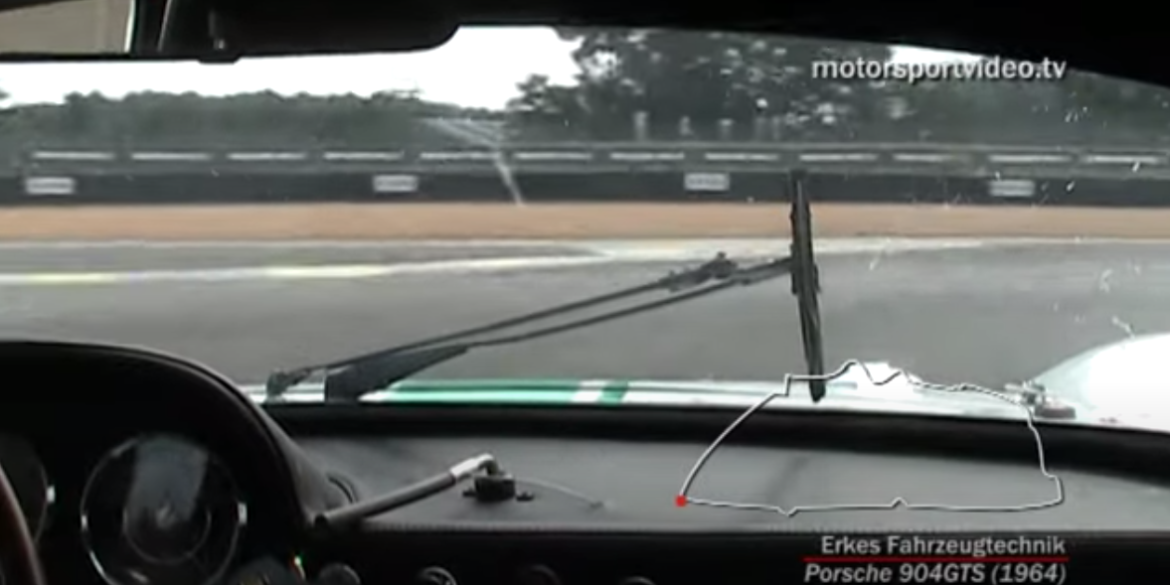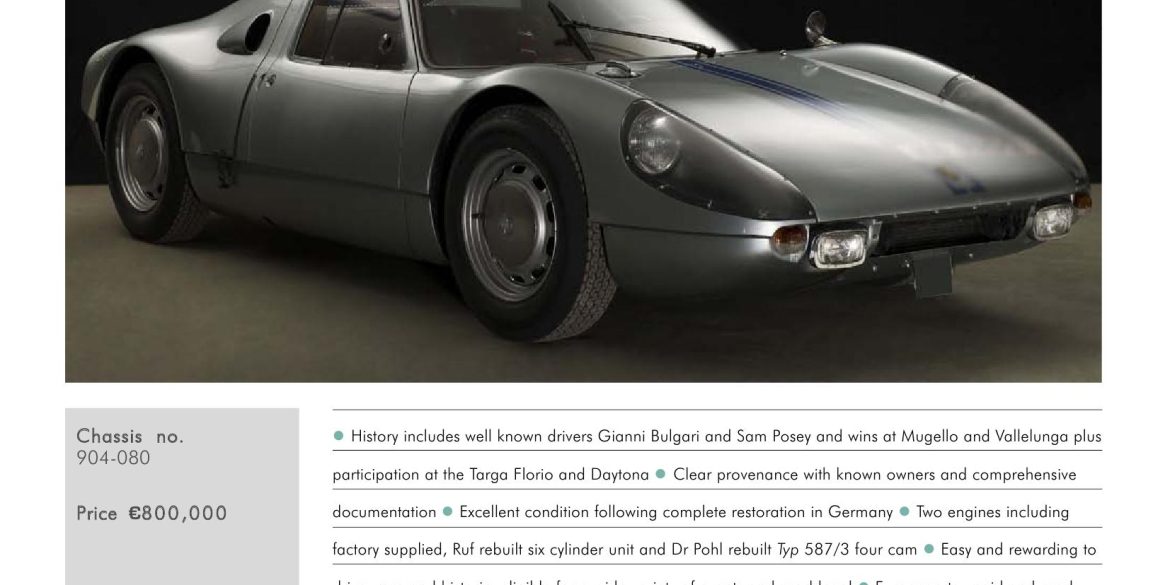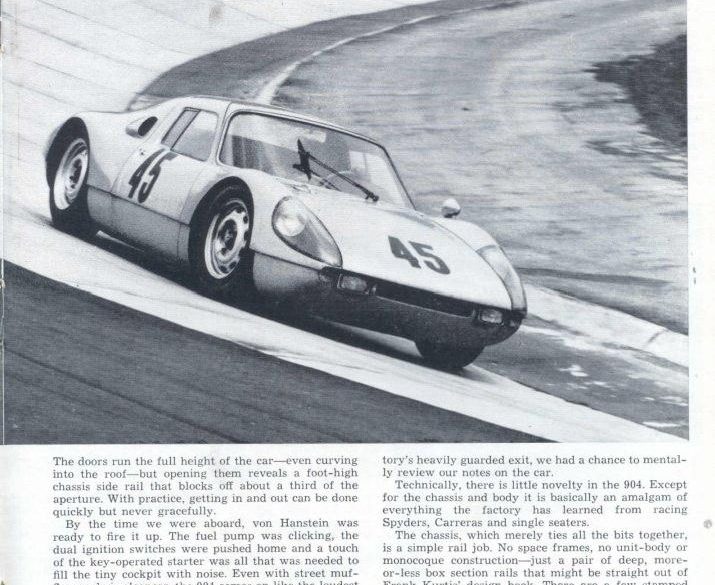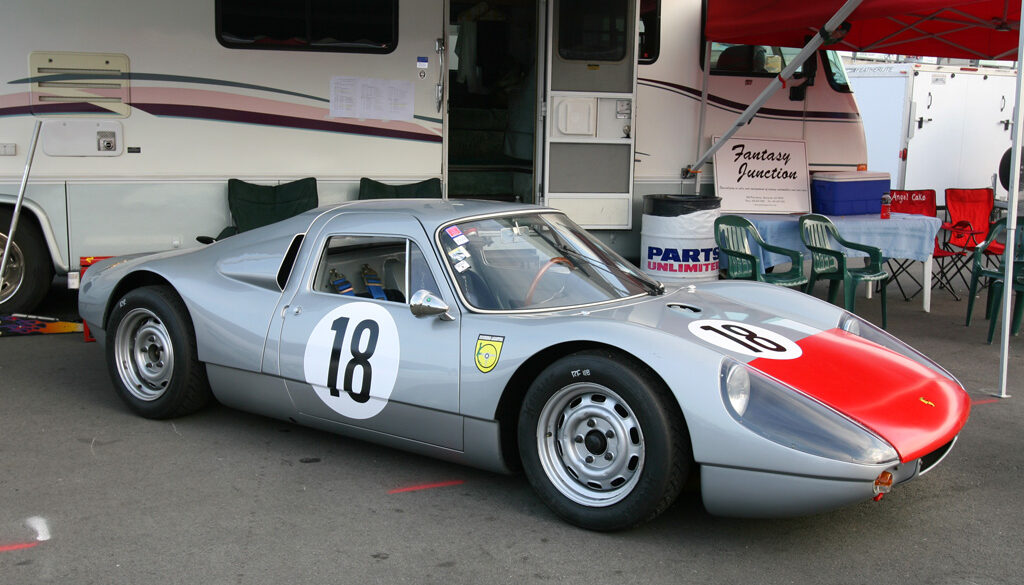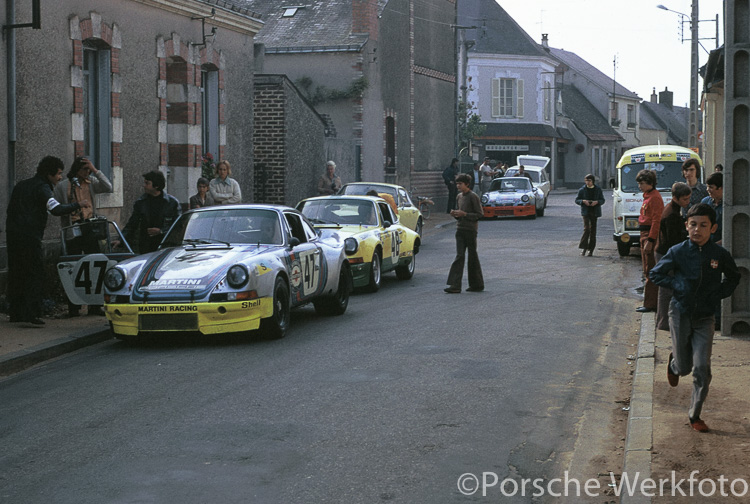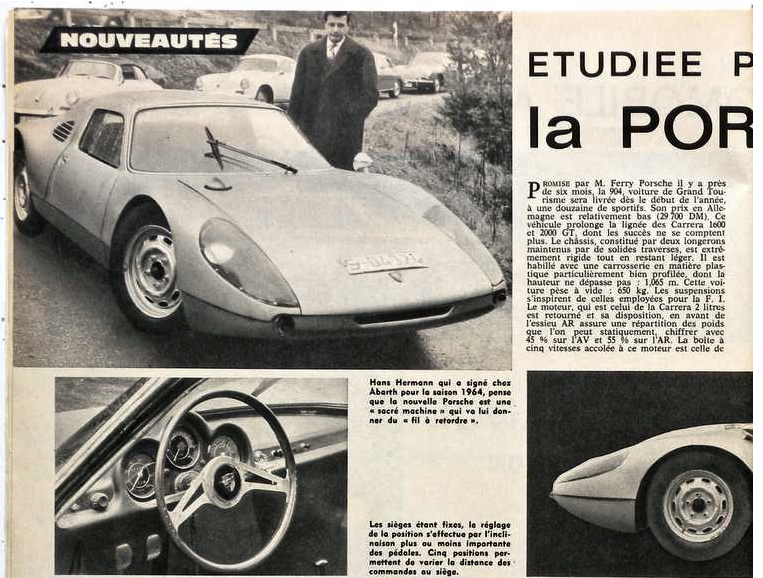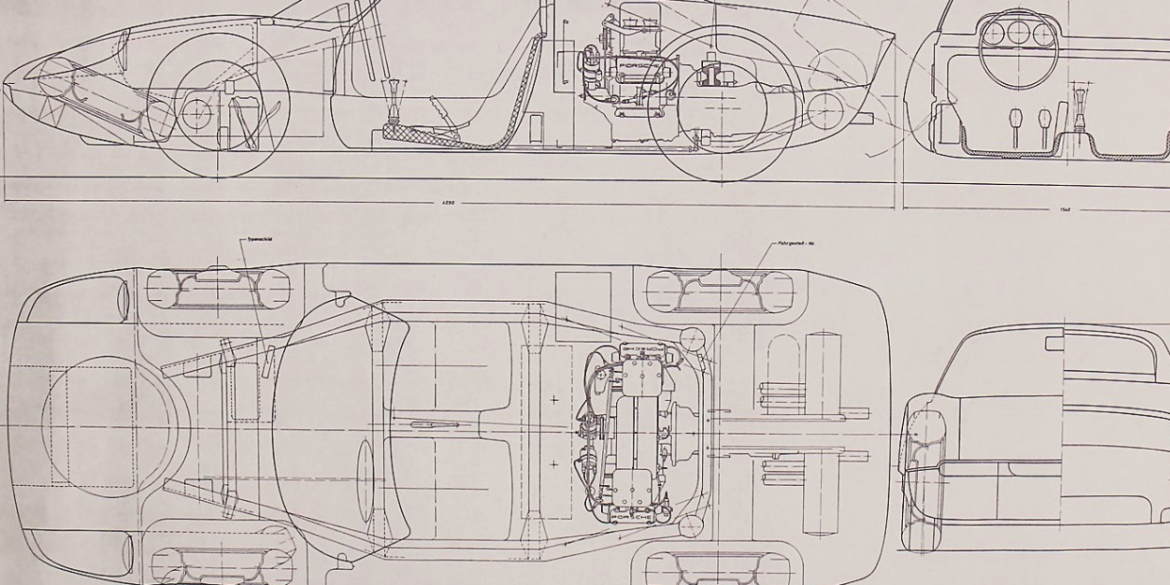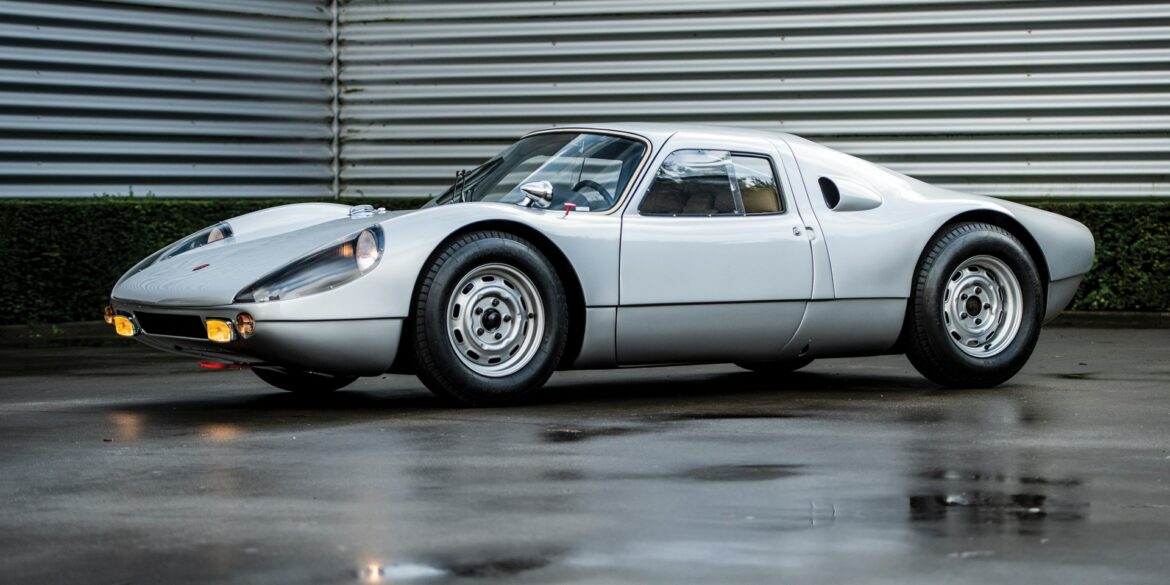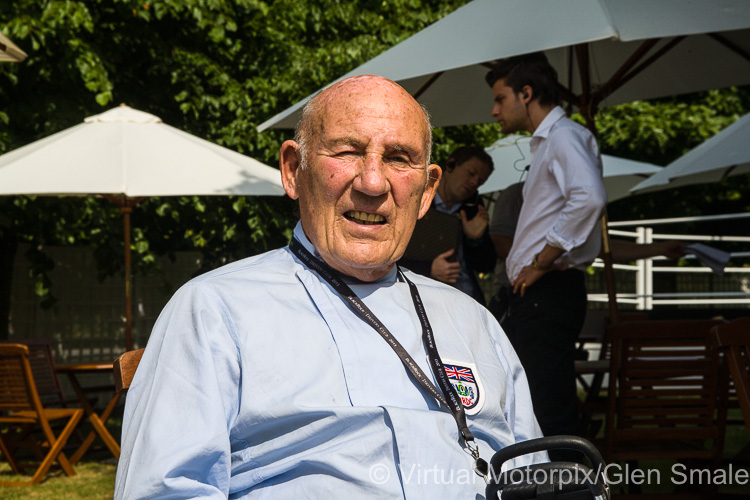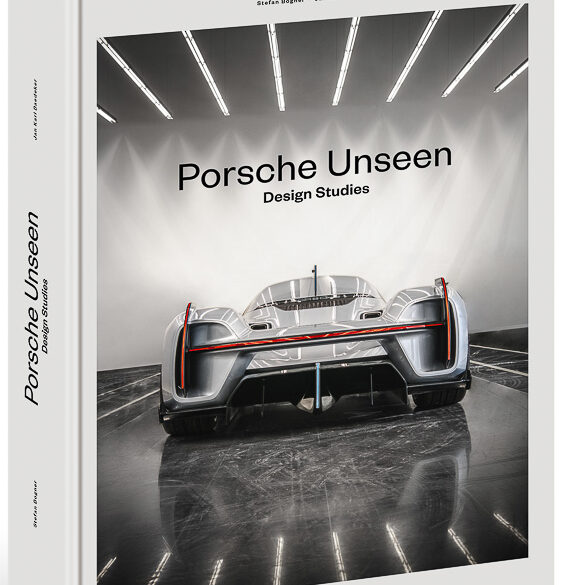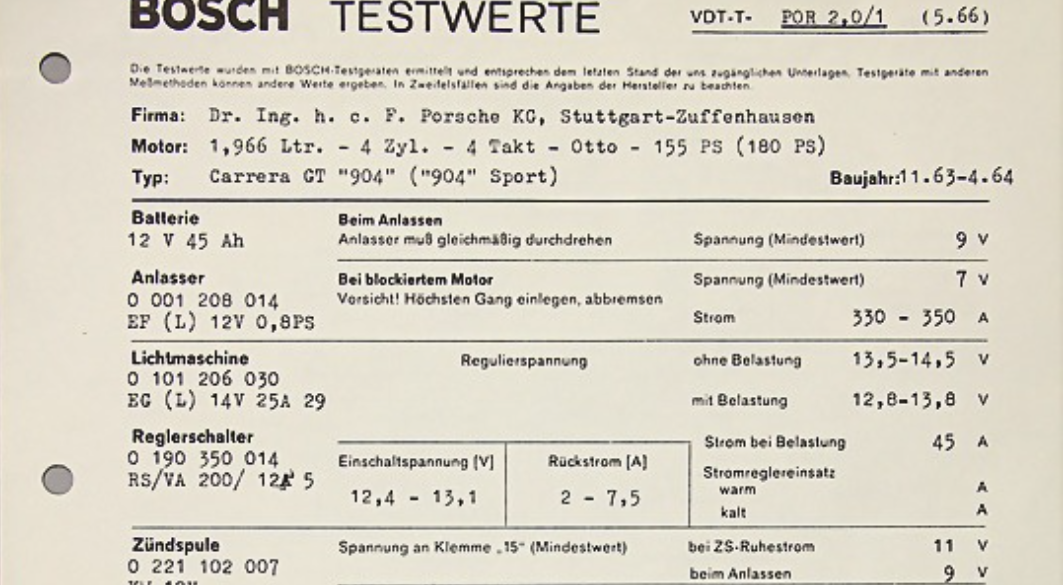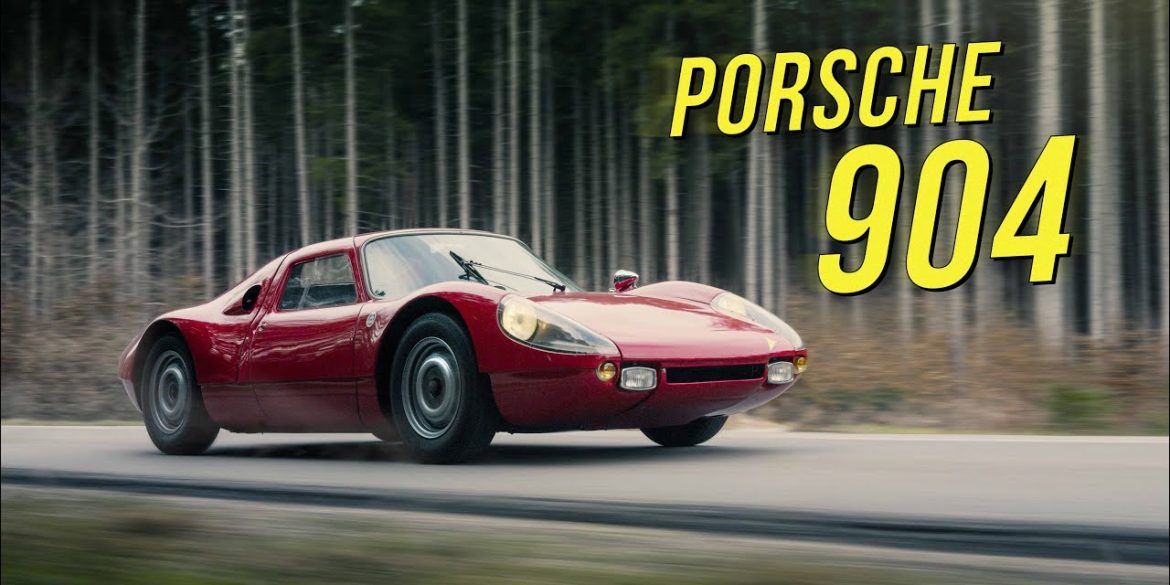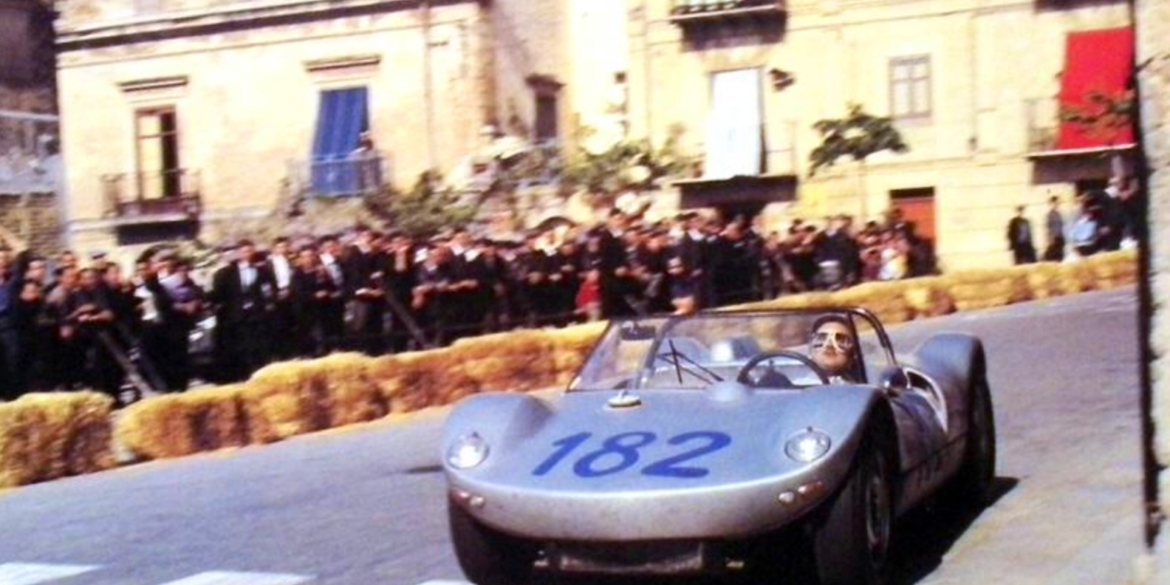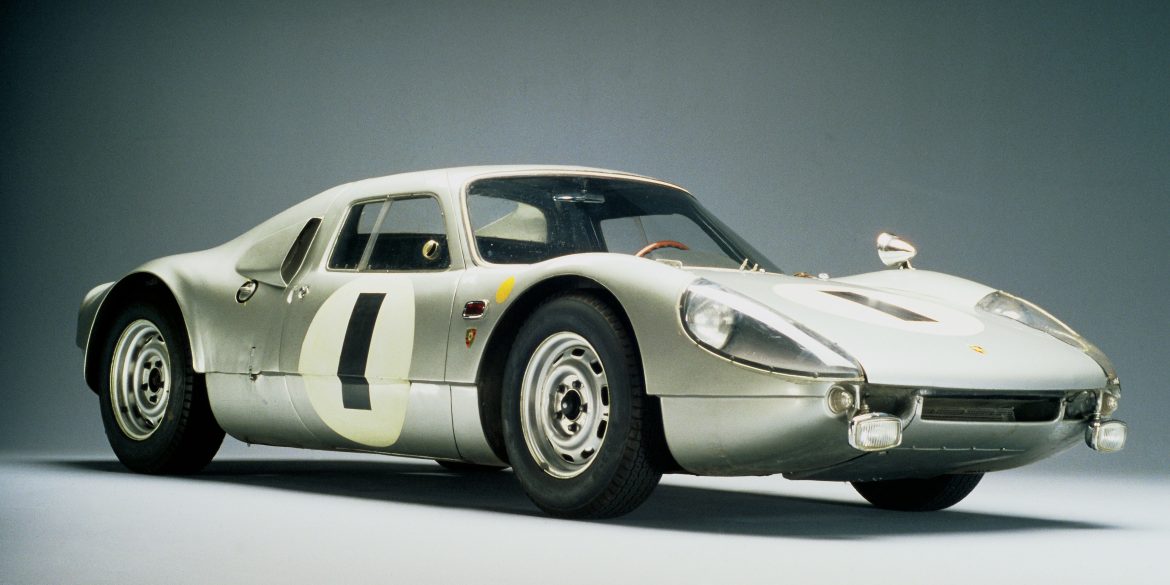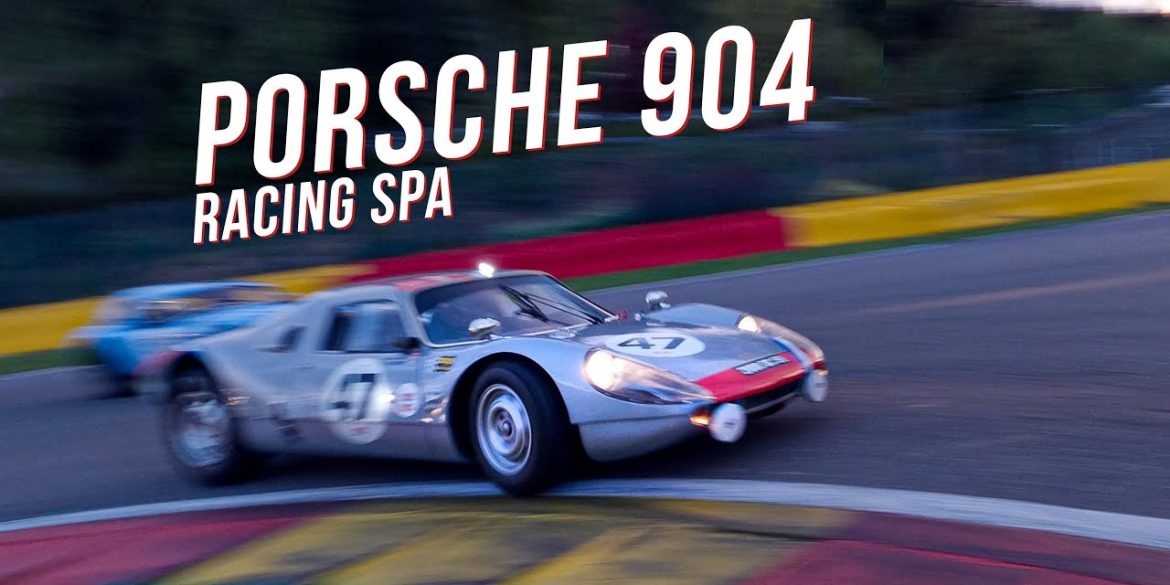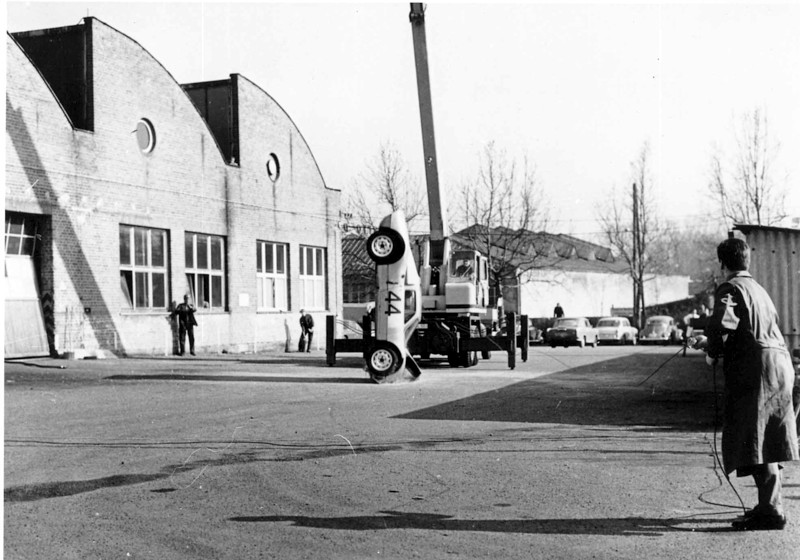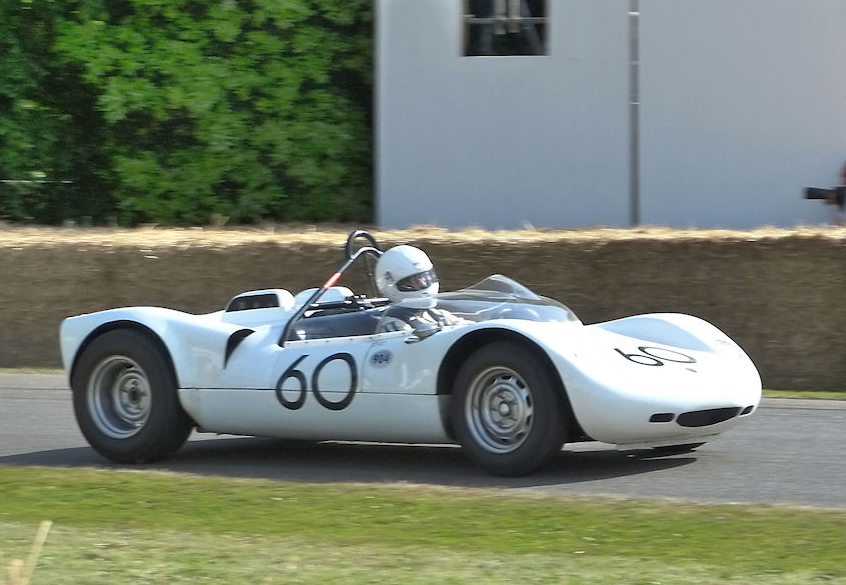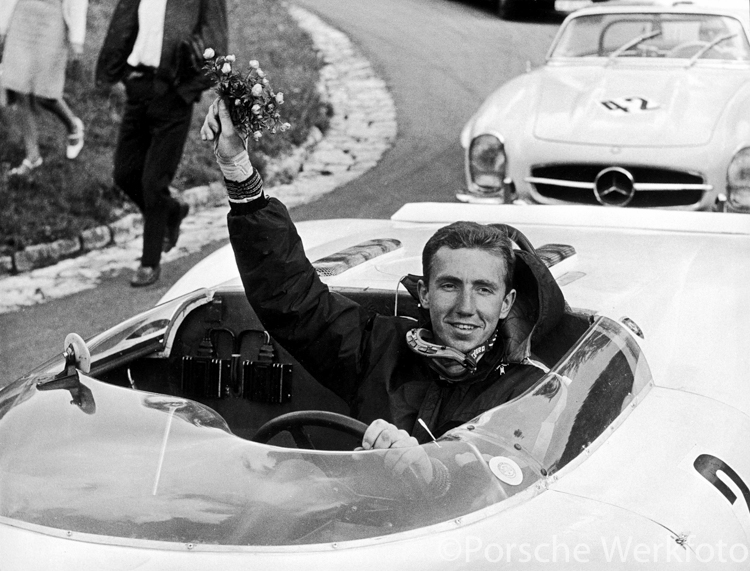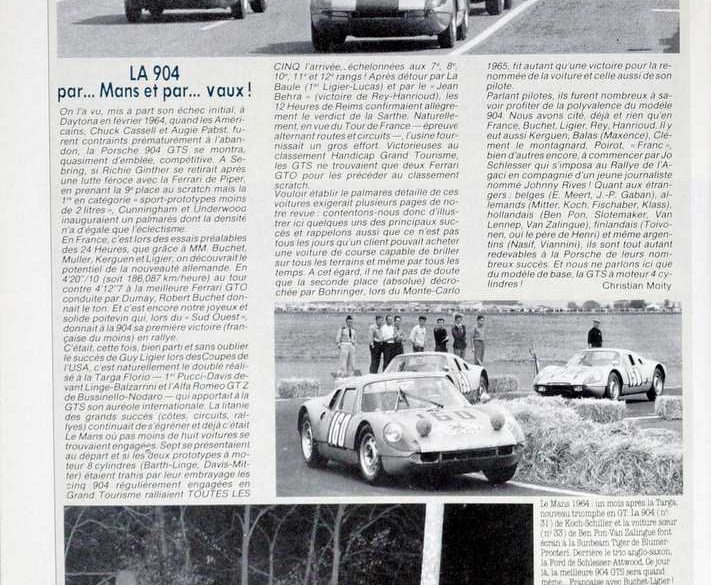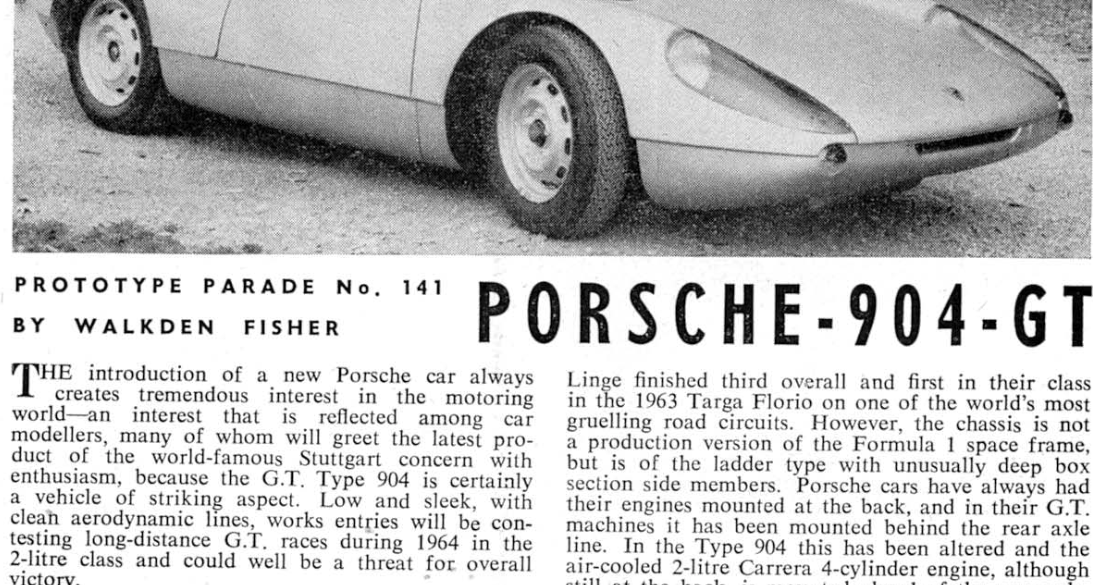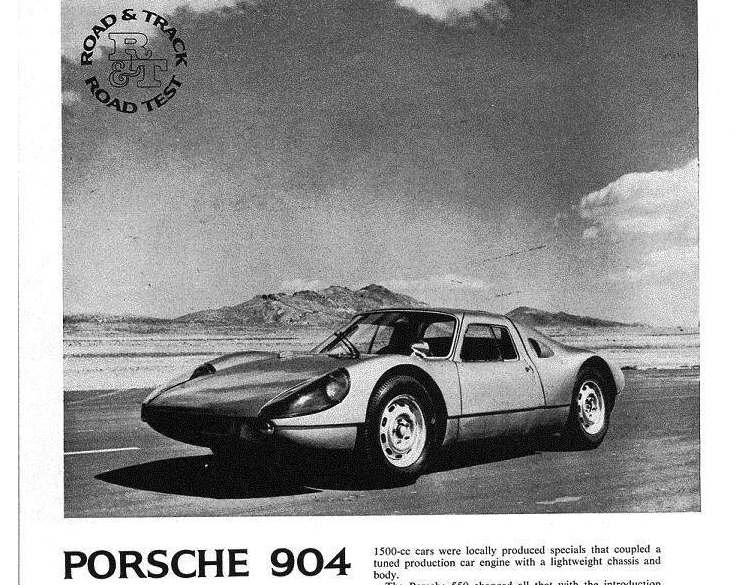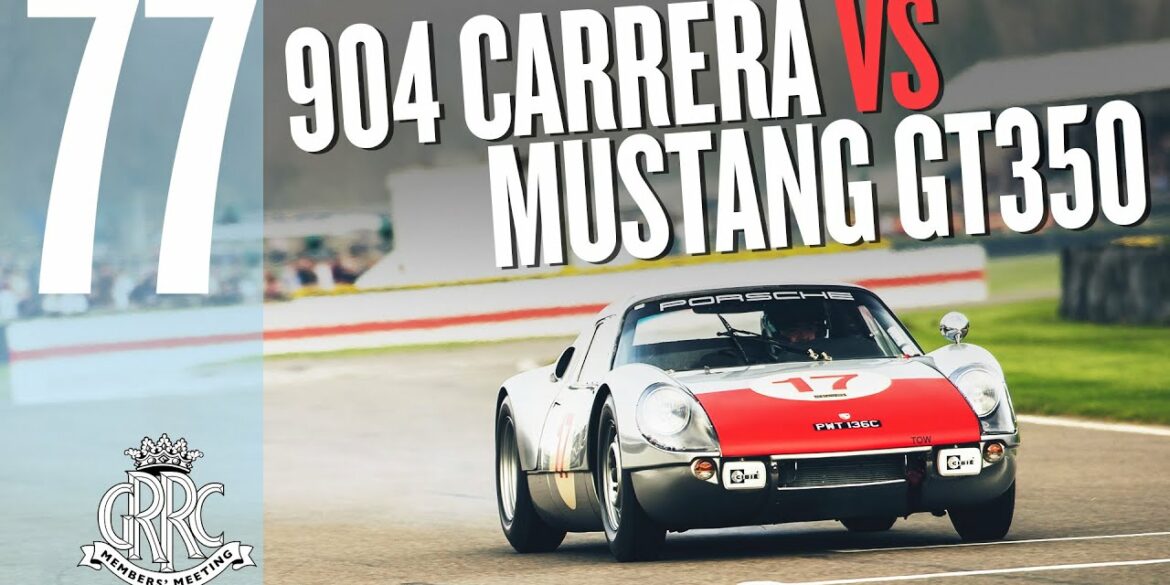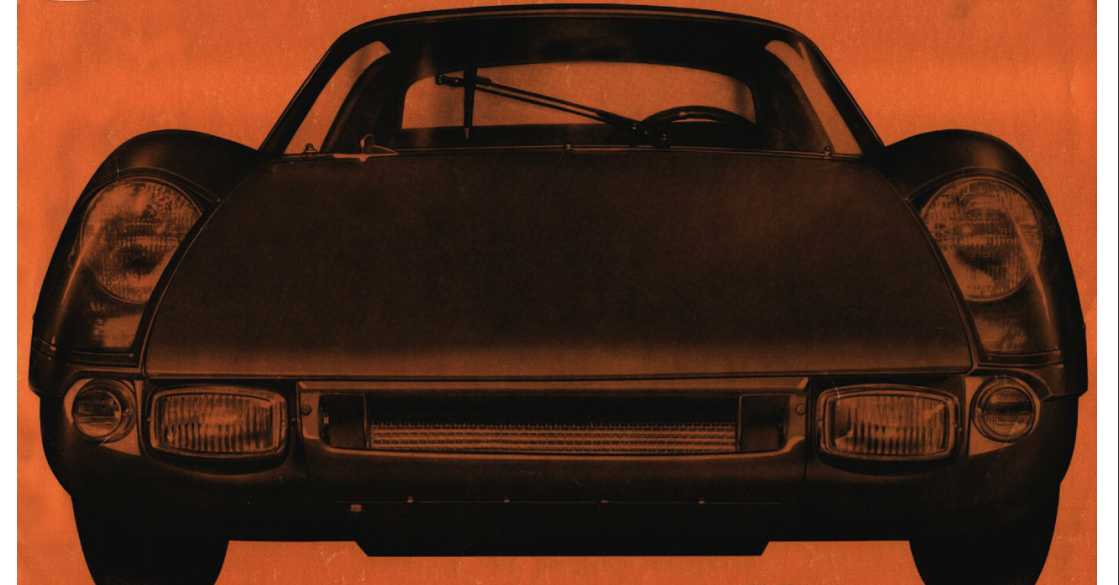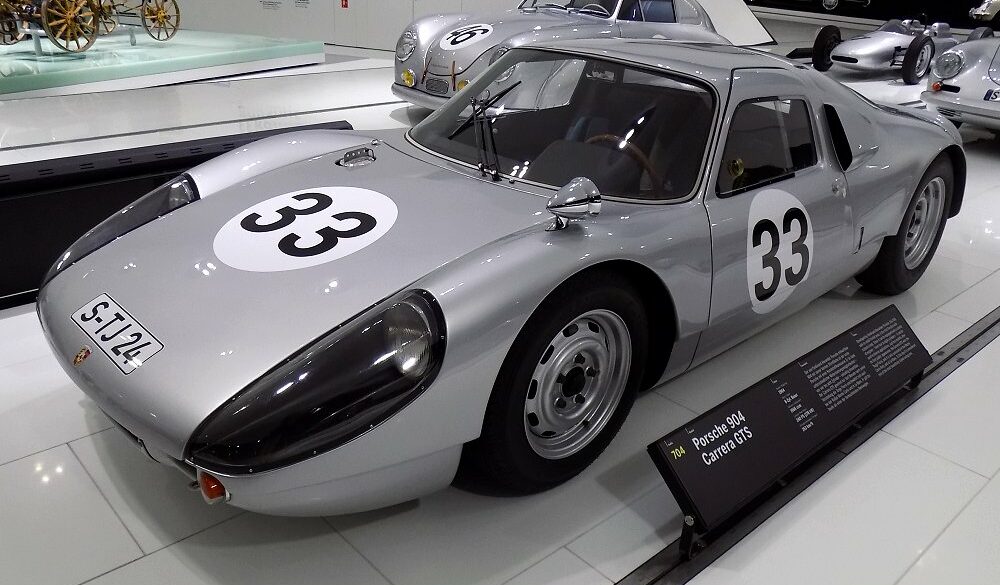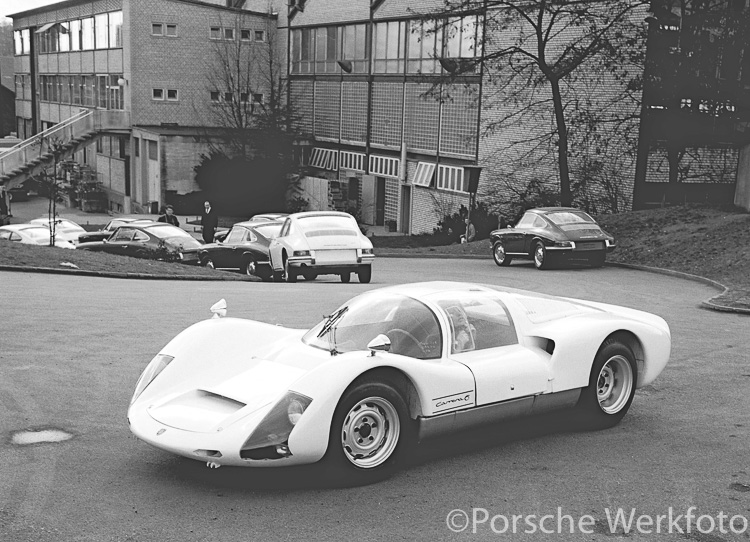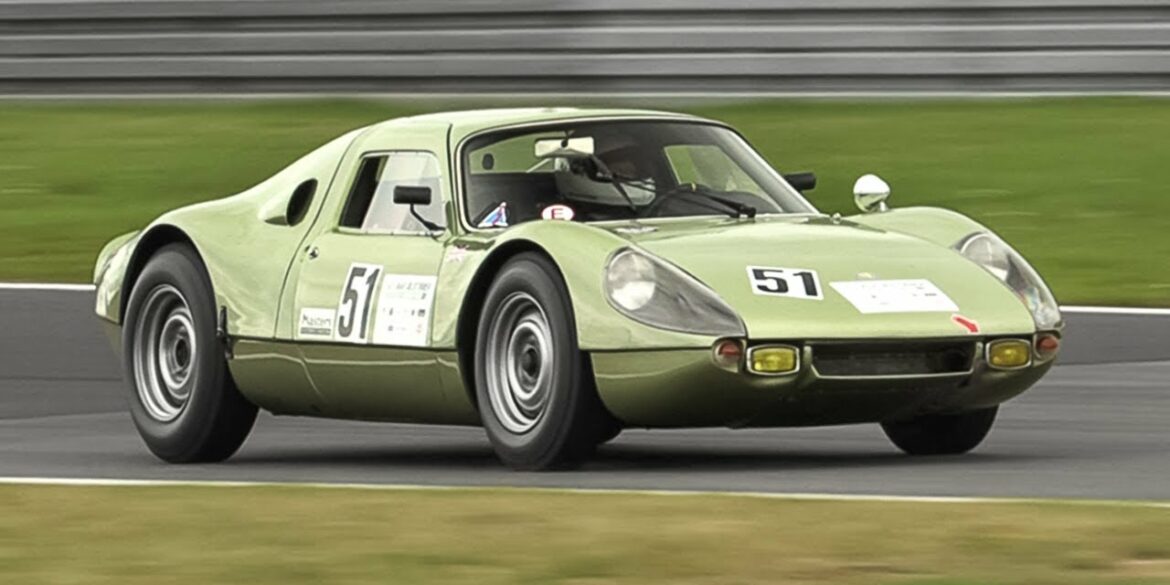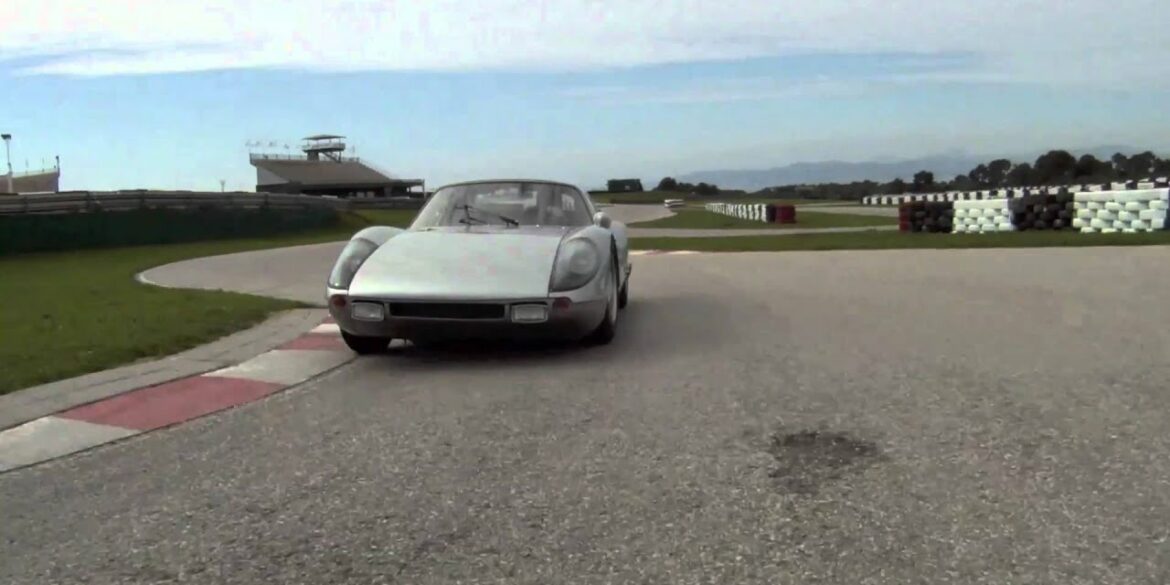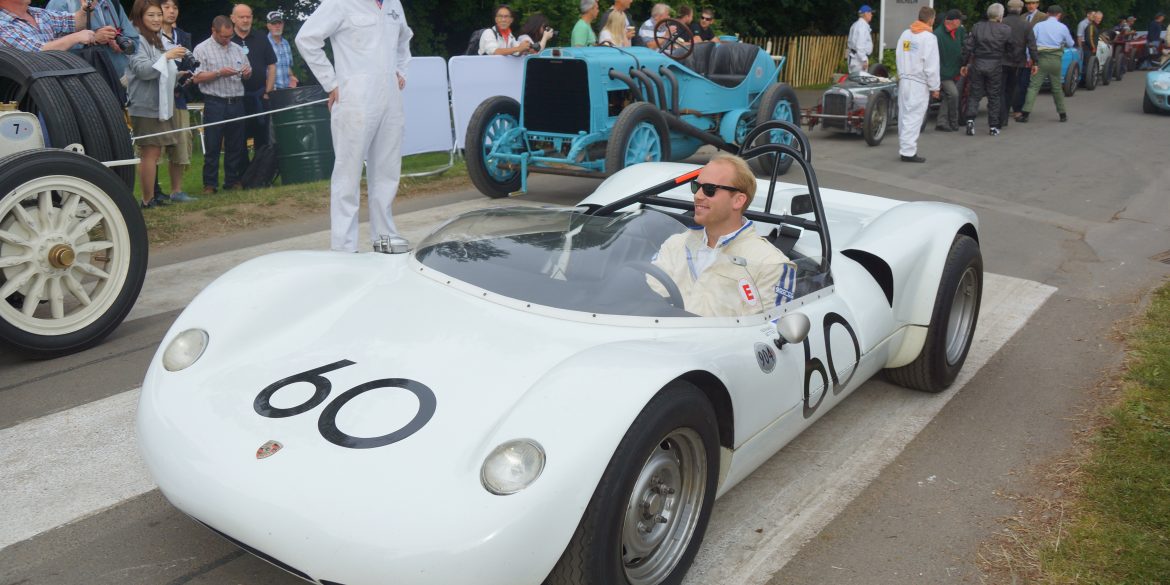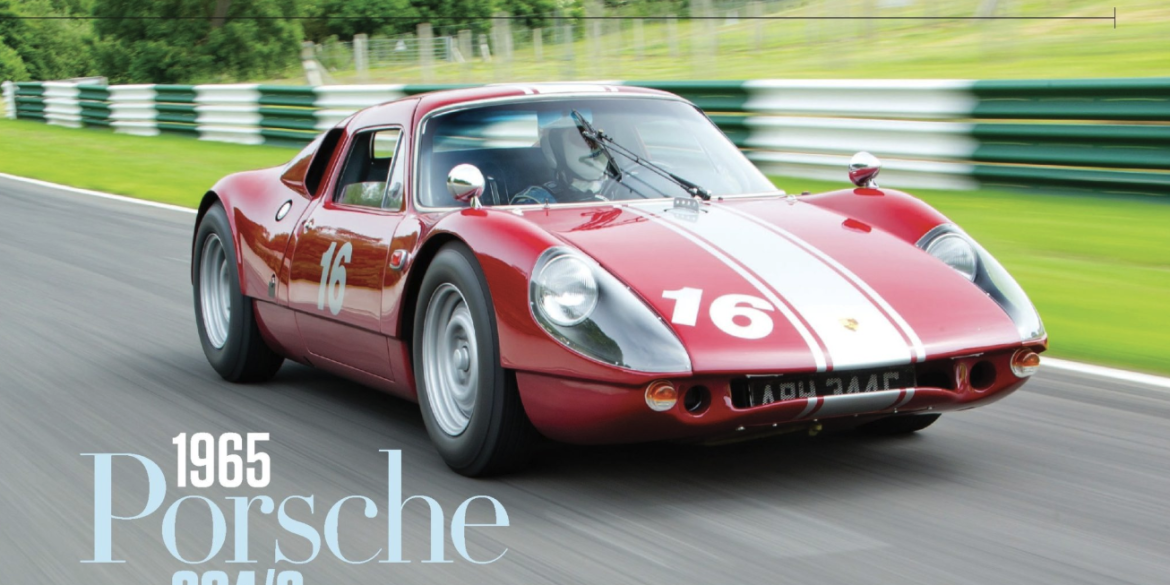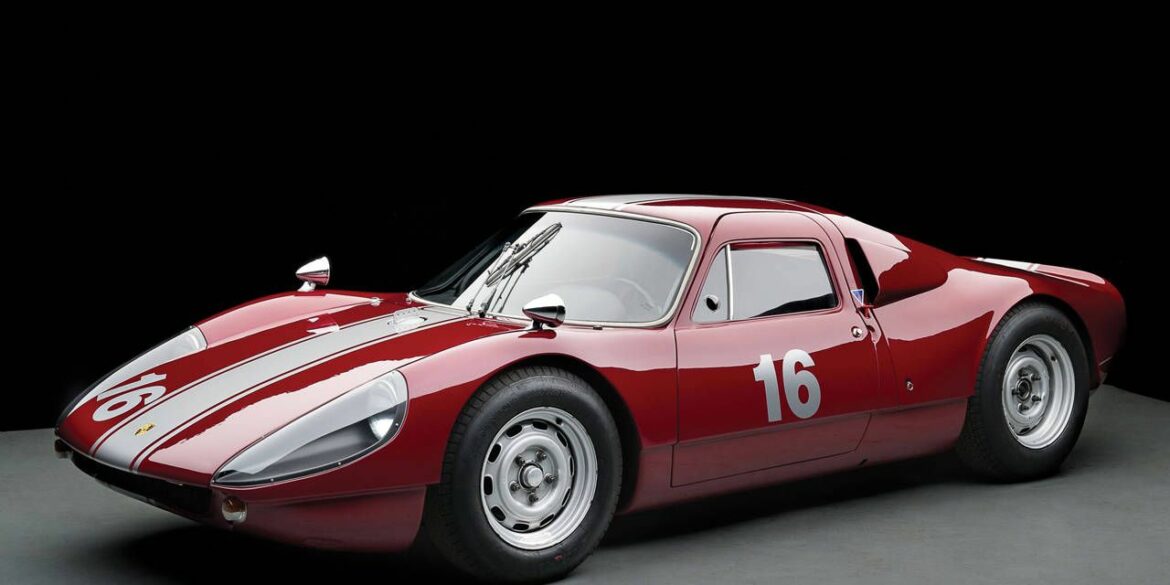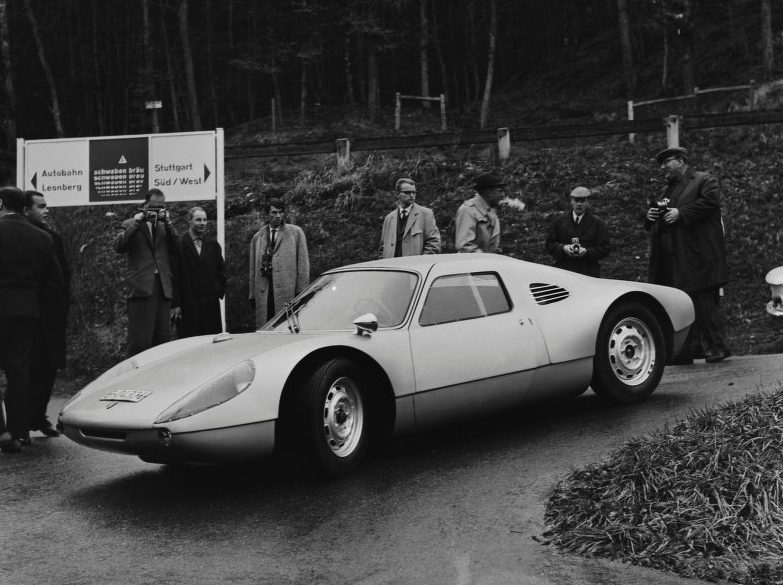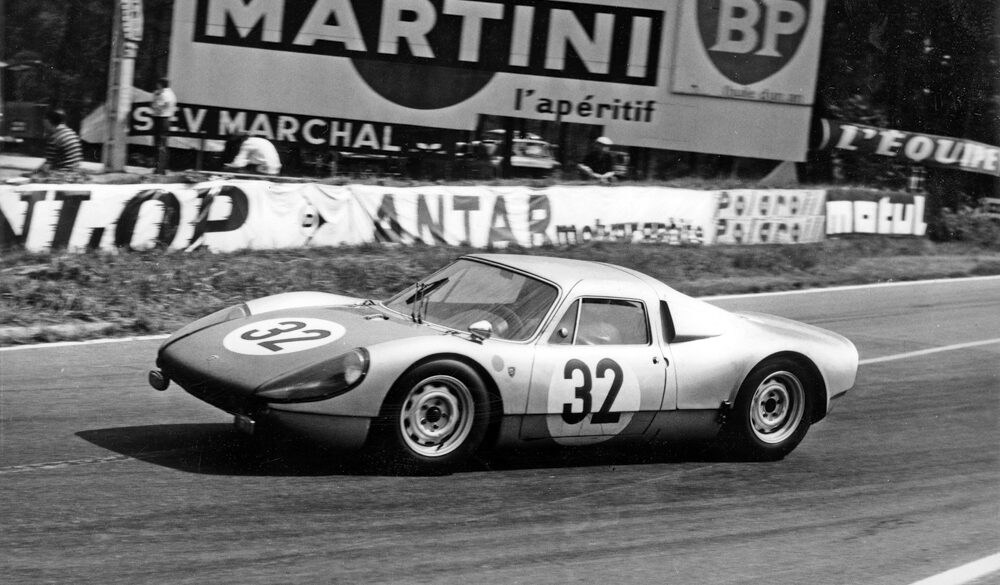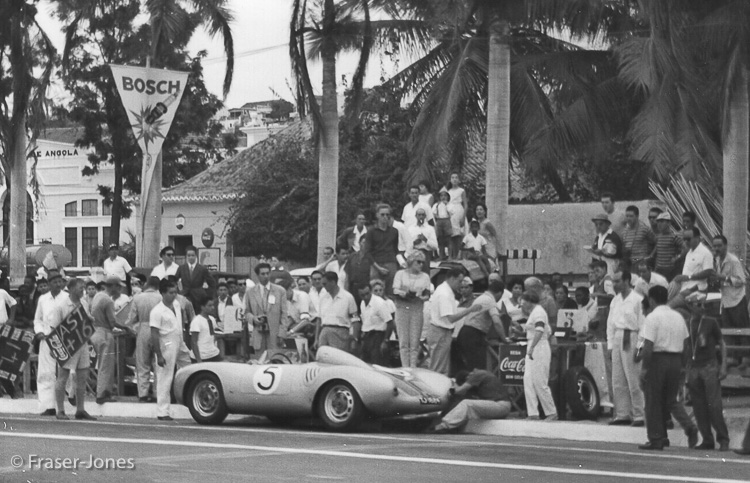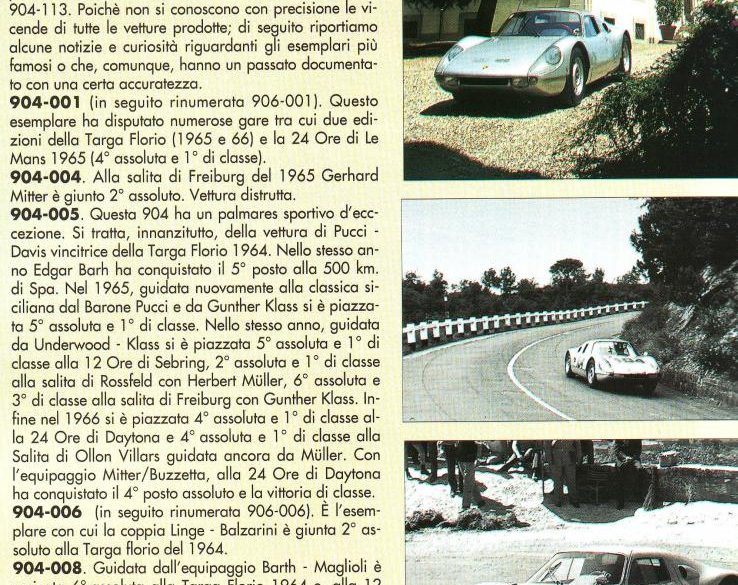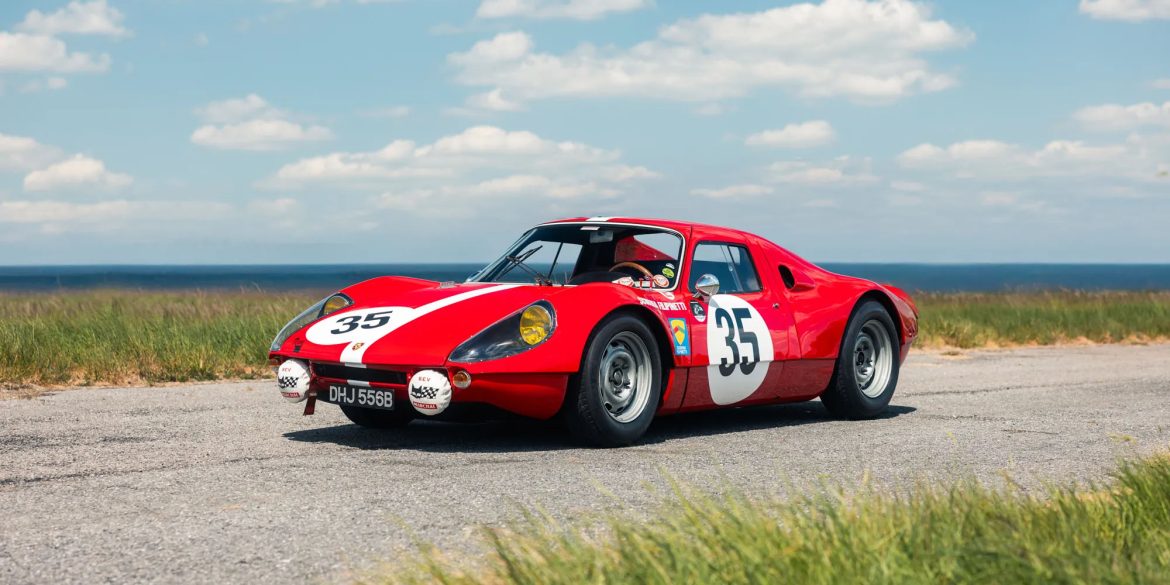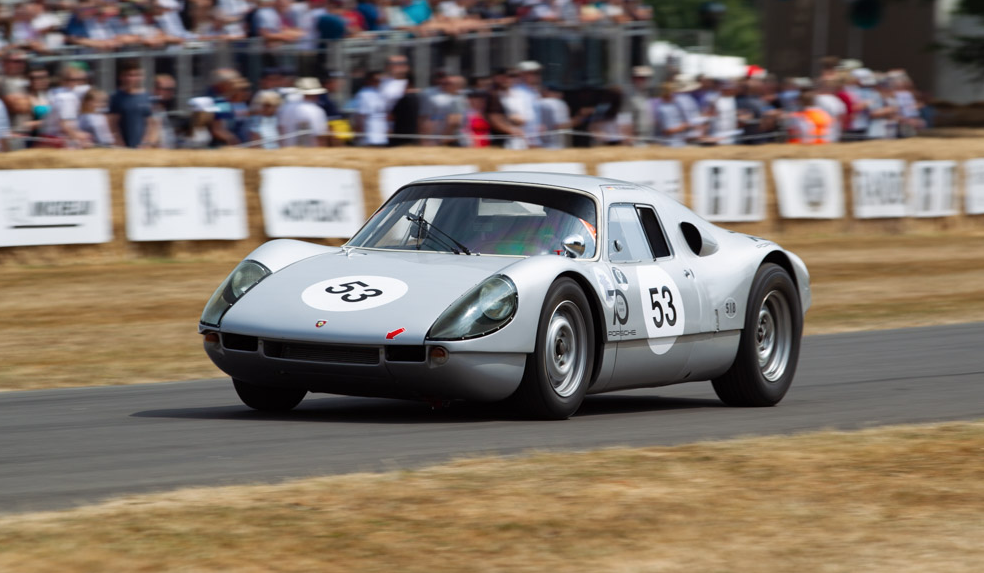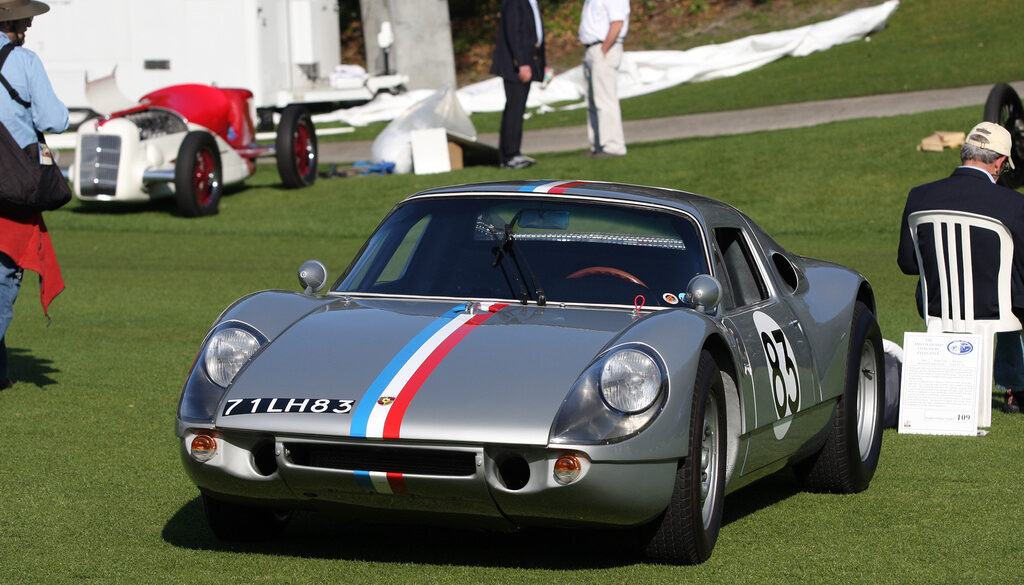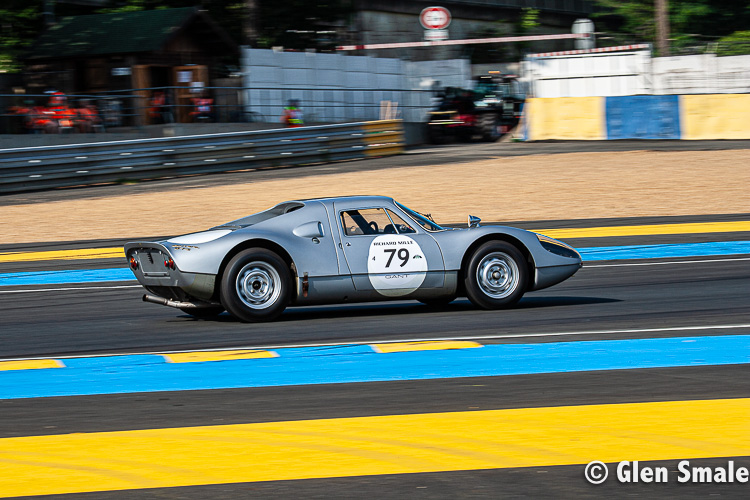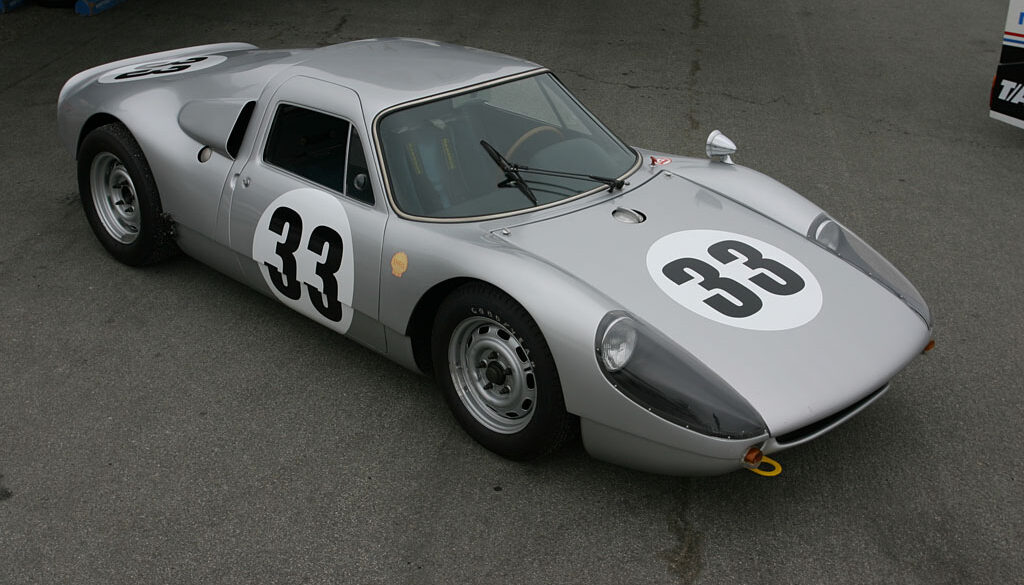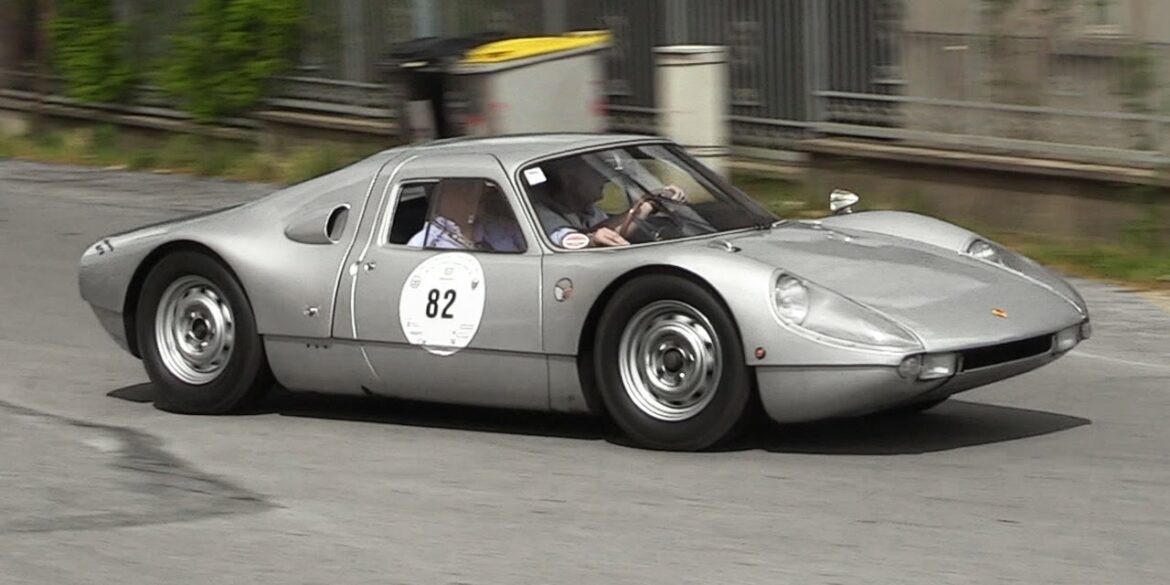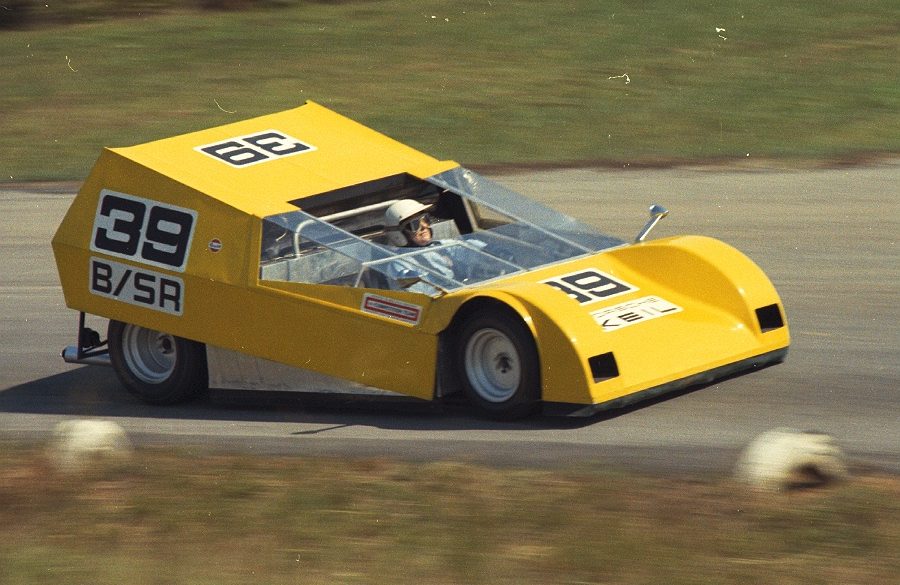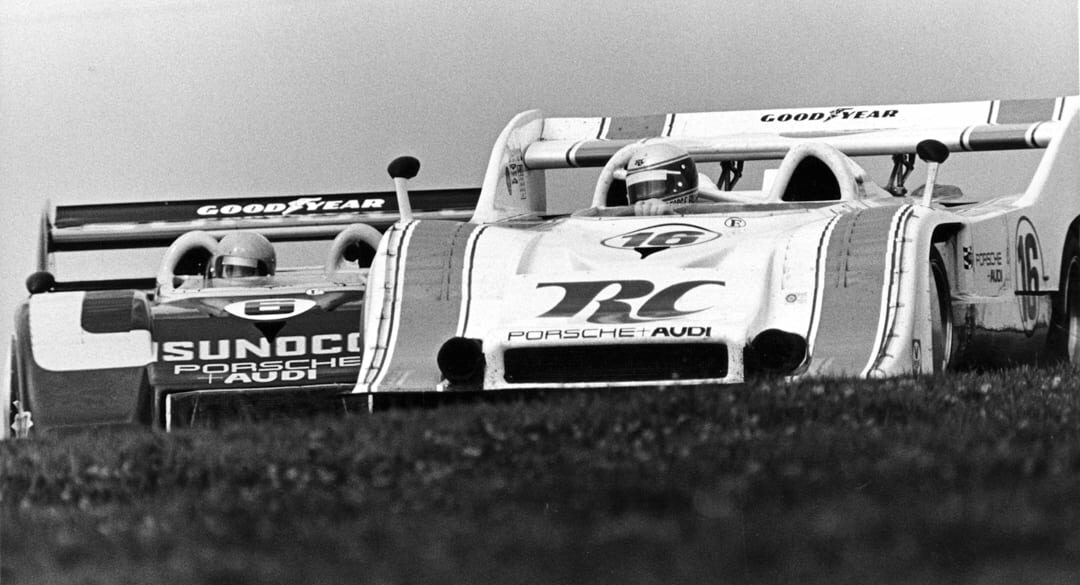Le Mans: The Official History 1960–69 by Quentin Spurring © Virtual Motorpix/Glen Smale This edition of Quentin Spurring’s fabulous series covering the Le Mans 24 Hours decade-by-decade, concerns the 1960s. Many will agree that the decade, 1960 to 1969, saw some of the most innovative race cars, and with relatively...
...
Organizers of the Chattanooga Motorcar Festival invited the Luftgekühlt’s celebration of Brian Redman, which resulted in a number of Porsches raced by Redman in attendance. Porsches, of course, were in abundance at the Festival, including five race cars and more than 20 street cars. Incredible Porsches in attendance included: Porsche...
1976 Porsche 935 The history of 935-001, the first Porsche 935 ever built, originates in a major revision to the FIA’s Group 5 category. For the 1976 racing season, the FIA changed the rulebook to allow extensive modifications to production-based vehicles homologated in Groups 1 through 4. These “Special Production...
Porsche 904 by Jürgen Lewandowski © Delius Klasing Verlag The introduction of the Porsche 904 Carrera GTS, to give it its full name, marked the beginning of an unprecedented period of race car development for the Stuttgart-Zuffenhausen factory. Not only did every year from 1964 to 1969 see a new...
...
Porsche 904 in car footage Iconic Goodwood circuit in a friends 904 in very chilly and tricky condition, start number 35. Awesome in-car footage....
No Subscription? You’re missing out Get immediate ad-free access to all our premium content. Get Started Already a Member? Sign in to your account here....
Porsche 904 Carrera GTS Engine Sounds This time I have filmed an unique Porsche 906 Carrera GTS racing on circuit SPA-Francorchamps. The legendary 904 Carrera GTS is today considered one of Porsche’s most desirable and collectible models. The 904 Carrera GTS has a 1,991 cc air-cooled six-cylinder engine with two...
Under normal circumstances, this year’s Rennsport Collective would have taken place at the beginning of August, when the weather was a good deal warmer and perhaps slightly more predictable. As it happens, with the onslaught of the Covid-19 pandemic, many smaller and some really big international events have been summarily...
...
The Porsche 904 debuted late in 1963, for the 1964 racing season. Porsche designed the 1965 Porsche 904 Carrera GTS variant to compete in the FIA-GT class at various international racing events and a street-legal version debuted in 1964 in order to comply with FIA’s Group 3 homologation regulations. When the 904 Carrera GTS debuted, it represented Porsche’s first foray into fiberglass bodywork and the last hurrah for its four-cam, four-cylinder engine.
Le Mans 24 Hours, 31 May-1 June 1986: Start of the race – Porsches dominate the lead group In Part 1, Stories from Le Mans – with a Porsche flavour, our intrepid scribbler who hails from that beautiful part of South Africa, the Western Cape, shares with us some hilarious...
Porsche 904 GTS LeMans Classic 2010 One qualifying lap inbaord Porsche 904GTS at LeMans Classic 2010, 2000ccm engine, build in 1964. watch the blue cobra at 6:40 !...
No Subscription? You’re missing out Get immediate ad-free access to all our premium content. Get Started Already a Member? Sign in to your account here....
Porsche’s Type 904 was officially called the Carrera GTS because Porsche and Peugeot were still in their bitter disagreement over numeric designations with “0” in them. The Porsche 904 succeeded the RSK Type 718 as the last sports-racing iteration of the 356 series. It was also the last full-competition Porsche...
Porsche 904/6 Carrera GTS Pictures...
Le Mans 24 Hours, 23-24 June 1951: In the foreground of the workshop at Teloché is the #46 Porsche 356 SL driven by Edmond Mouche and Auguste Veuillet, while in the background is the #47 Porsche 356 SL which was damaged in practice by Rudolph Sauerwein Porsche has been represented...
Porsche 904-085 Special Delivery We had the pleasure of making a special delivery. Chassis 904-085 makes a fine addition to an already breathtaking collection, and we are thrilled that our good friend and client Todd Blue has become its new owner and caretaker.....
No Subscription? You’re missing out Get immediate ad-free access to all our premium content. Get Started Already a Member? Sign in to your account here....
Sir Stirling sits back and relaxes at the 2013 Goodwood Festival of Speed after being interviewed by the author It was with great sadness that we learned of the passing of Stirling Moss over the Easter weekend. He died on 12 April 2020 in Mayfair, London, England at the age...
Porsche Unseen by Jan Karl Baedeker & Stefan Bogner – © Delius Klasing Verlag Consider what it would be like to be given the opportunity to glimpse behind the scenes, into Porsche’s inner design sanctum, where the Porsche designers imagine the models of the future. There are 120 designers who...
The Porsche 904 is an automobile which was produced by Porsche in Germany in 1963 and 1965. It was officially called Porsche Carrera GTS due to the same naming rights problem that required renaming the Porsche 901 to Porsche 911. The 904 debuted late in 1963, for the 1964 racing...
For the underpinnings of the new 904 Bergspyder, the Porsche engineers recycled five chassis originally laid down for a production version of the six-cylinder 904/6 Coupes. The steel platform chassis of the 904 was reinforced with cross-braces to compensate for the rigidity that had originally been provided by the coupe body. The Bergspyders were tried with both the exotic twin-cam eight-cylinder engine and a highly tuned flat six.
Porsche’s Type 904, officially called the Carrera GTS because Porsche and Peugeot were in dispute over numeric designations with “0” in them, succeeded the RSK Type 718 as the last sports-racing iteration of the 356 series. Developed after Porsche left Formula One in 1962, the 904 (as it soon became popularly known) was also the last full-competition Porsche that could be readily driven on the street. This is the full story.
The Porsche 904 is an automobile which was produced by Porsche in Germany in 1963 and 1965. It was officially called Porsche Carrera GTS due to the same naming rights problem that required renaming the Porsche 901 to Porsche 911. After having withdrawn from Formula One at the end of...
Peter Falk sits on the sill of the famous #23 Porsche 917 KH Coupé, winner of the 1970 Le Mans 24 Hours. On this occasion it is located in the Porsche Museum Workshop on 28 June 2010 In a 34-year career at Porsche, the influence of Peter Falk – Porsche’s...
No Subscription? You’re missing out Get immediate ad-free access to all our premium content. Get Started Already a Member? Sign in to your account here....
Mont Ventoux, 18 June 1967 – Rolf Stommelen won this hillclimb driving a Porsche 910/8 Bergspyder Rolf Stommelen was one of Germany’s leading racing drivers for over a decade and if as the title (above) of his biography implies, he could drive anything anywhere, this was largely true. Although his...
...
No Subscription? You’re missing out Get immediate ad-free access to all our premium content. Get Started Already a Member? Sign in to your account here....
Porsche 904 v Mustang at Goodwood A stunning flat-six powered #Porsche 904 battled with the All-American might of a Ford Mustang in practice for the Graham Hill Trophy at the 77th Members’ Meeting. #78MM...
Porsche 904 Carrera GTS Sales Brochure The Porsche 904 Carrera GTS, introduced in 1964, is an iconic mid-engine sports car that bridged the gap between Porsche’s road cars and its racing prototypes. Designed by Ferdinand “Butzi” Porsche, the 904 featured a sleek, lightweight fiberglass body over a steel frame—an innovative...
No Subscription? You’re missing out Get immediate ad-free access to all our premium content. Get Started Already a Member? Sign in to your account here....
The formidable Carrera 6 outside the Porsche headquarters, Stuttgart Zuffenhausen, 1966 The Carrera Six, as Porsche officially called the 906, was a radically different car from its predecessor, the 904 GTS. The 904 was a sleek glass fibre bodied racer penned by Butzi Porsche, and it took over as Porsche’s...
Porsche 904 Carrera GTS: 2.0L Flat-4 Engine Sound! Great to record and finally hear a Porsche Carrera GTS powered by the 2.0-liter N/A flat-4 engine (unfortunately, or luckily, I’ve always saw a couple of “904/6”, the ones with the 911’s flat-6)...
Porsche 904 GTS meets Walter Roehrl What happens when one of the best drivers in the world meets one of the most beautiful coupes of all times? The answer is pure driving pleasure....
Porsche 904 Bergspyder Pictures...
No Subscription? You’re missing out Get immediate ad-free access to all our premium content. Get Started Already a Member? Sign in to your account here....
No Subscription? You’re missing out Get immediate ad-free access to all our premium content. Get Started Already a Member? Sign in to your account here....
In 1965, the 904’s second and final production year, some examples received a version of the 911’s 2.0-liter flat-six. This version was dubbed the 904/6 and was focused on the factory works effort by Porsche. Six of these cars were so equipped and used a chassis number of 906-0xx. Porsche built a total of six similar 904/6 Works team cars with the following chassis number assignments: 906-001, 002, 005, 006, 011, and 012.
No Subscription? You’re missing out Get immediate ad-free access to all our premium content. Get Started Already a Member? Sign in to your account here....
A Porsche 904 Carrera GTS Coupé in 1963 outside the factory in Stuttgart-Zuffenhausen. The early version had a slatted air intake behind the doors, this being replaced by scoops which were more efficient The Porsche Carrera GTS represented a watershed in the company’s march towards motorsport fulfilment. Gone was the...
Ian Fraser-Jones – ‘Out’ after a one mile push, the car having stopped due to a gearbox failure, the car’s only mechanical failure – Angola 1959 Porsche used its racing exploits around the globe not only to gain exposure and media coverage, but also to improve the performance and reliability...
No Subscription? You’re missing out Get immediate ad-free access to all our premium content. Get Started Already a Member? Sign in to your account here....
Porsche 904/8 (chassis #008) photographed in the Porsche Museum, September 2020 F.A. ‘Butzi’ Porsche, the eldest son of Ferry and Dorothea Porsche, joined the family business in 1958 having shown great interest in the field of industrial design. Working under the direction of Erwin Komenda, F.A. Porsche set about learning...
Porsche 904 GTS vs Cayman GT4 After completing an engine rebuild on a Porsche 904 Carrera GTS, we took it for a drive to compare it to the Cayman GT4. Both vehicles are low weight and mid-engined. While over 50 years older, the 904 is capable of keeping up with...
Highlights The ex-Scuderia Filipinetti Porsche 904 GTS, Chassis 079 4th in class at Le Mans 1964 with Herbert Müller and Claude Sage Fully documented history, including 25-year custodianship by Porsche Museum Proven historic racer, appearances at Goodwood, Le Mans Classic and Silverstone Classic Background While the 550 Spyder and 718...
Porsche 904/8 Carrera GTS Pictures...
Porsche 904 Carrera GTS Pictures...
Snow greeted the early birds on Sunday morning at the Goodwood 76th Members’ Meeting – this is David Clark’s Porsche 904 Carrera GTS, March 2018 There was talk of snow over the weekend of 15-17 March 2018 in the east of England, but either very few gave the warning much...
Le Mans Classic, 6 July 2018: #79 Porsche 904 Carrera GTS driven by Boden/Lins Those with sharp eyes may have picked up from our Calendar that the Le Mans Classic has been postponed yet again, until July 2022. We at Porsche Road & Race are as disappointed as the rest...
Three factory race cars were fitted with a flat eight-cylinder power plant derived from the 1962 804 F1 car, the 225 hp (168 kW) 1,962 cc (119.7 cu in) Type 771, which used 42 mm (1.7 in)-throat downdraft Weber carburetors. The Type 771s, however, suffered a "disturbing habit" of making their flywheels explode. The 904/8 cars had a short and relatively unlucky racing career.
Porsche 904 Carrera GTS Accelerations & Sound During the 2016 Vernasca Silver Flag historic hillclimb revival I recorded this 1964 Porsche 904 Carrera GTS (chassis #906-077). Listen to it doing some accelerations on the hillclimb course!!...
© White Racers from Zuffenhausen: Porsche 904, 906, 907, 908, 909, 910 In 2018, we reviewed one of the other books in this series, Porsche Spyders 1956-1964, and this year we will have a couple more to do. White Racers from Zuffenhausen, is another in this series, and as we...
The Porsche 904 is widely regarded by many Porsche enthusiasts as the greatest road-going Porsche of all time. While it set the standard for a whole generation of racing Porsches, its aesthetic appeal overshadowed the fact that it lacked aerodynamic perfection and carried excess weight. Additionally, due to caution regarding...
The Elva Mk VII, the chassis of which was used as the basis for the Porsche-Keil Racing debut: SCCA South East Division (Formula B) 09/28/1969 Virginia International Raceway RACE 1 27.7.1969 Descent RACE 2 09/28/1969 did not finish RACE 3 10/19/1969 victory...
The Can-Am Porsche 917 The Can-Am Race Series, held from 1966 to 1974, helped propel professional sports car racing to new heights of popularity in the United States. The series was governed by an open and simple set of rules, which created an environment that brought the most powerful and...



